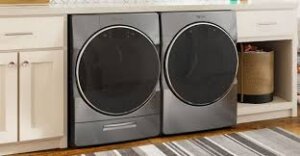Your typical oven temperature sensor in electric ovens is the one responsible for a number of essential functions. So it stands to reason that a damaged sensor will be very evident.
If you are experiencing any of the following:
- Longer cooking times that may be gradual or sudden
- Raw spots in food with uneven cooking
- A rapid spike in temperature
Then you may have an appliance repair in your hands. You can contact appliance repair in the Edmonton area.
Other signs of a sensor malfunction are error messages such as F4 or F3. It could also be viewed as F1, F2, F5, F30, E2-F3, E1-F3 and incorrect temperature reading on the dials. While the sensor itself may not be the main problem, it’s time to check. Grab hold of insulated gloves, a screwdriver set, and a current tester. Take off the plug. We’re off to understanding the oven sensor.

What it Does and Where it is
The difference between a thermostat and a sensor is simple. Thermostats are responsible for turning on the heating element while the sensor helps regulate how much heat is released. When the sensor detects that the temperature you set on the dials is reached, the thermostat turns the heating element off.
This best explains why temperatures in an oven intermittently fluctuate. You could see an upward and downward reading with the right tools sensitive enough to give a real-time reading.
On electronic models, the sensor is located at the back wall of the oven. Usually, it is encased in a mounting plate that looks like a small flat bar tapered to its tip between two screws that stabilize it. On some oven models, the sensor may be located at the side. Countercheck the location by referring to the manual just to make sure.
Troubleshoot
Ready your temperature checker. You should be able to check the sensor’s current while the whole appliance is off. But if you can’t, please do not try tinkering on your own. Release the small flat stick on the sensor and bring the tester into the middle hole where the sensor is. Below is the reading granted the sensor is still working.
Common Oven Sensor Approx. Values
Temperature (F/C) Resistance (ohms)
70°F / 21°C ~1080 +/-4.9
100°F / 37.7°C ~1143 +/-6.0
250°F / 121°C ~1453 +/-8.9
350°F / 176.6°C ~1654 +/-10.8
450°F / 232°C ~1852 +/-13.5
550°F / 287.7°C ~2047 +/-15.8
650°F / 343.3°C ~2237 +/-18.5
900°F / 482.2°C ~2697 +/-24.4
*Does not apply to older GE sensor # WB21X158
If the readings are off, then the sensor may be the problem or its harness. Take out the screws and then re-screw them in.
If the problem keeps repeating, then it’s time to call your service provider. One other sign of calling in the experts is when the error message keeps on flashing when the oven is turned on. There is no way you can be able to check while the oven is still in! You could burn your fingers or worse.
Remember to be safe than sorry!



